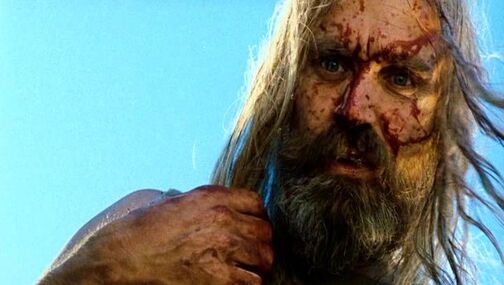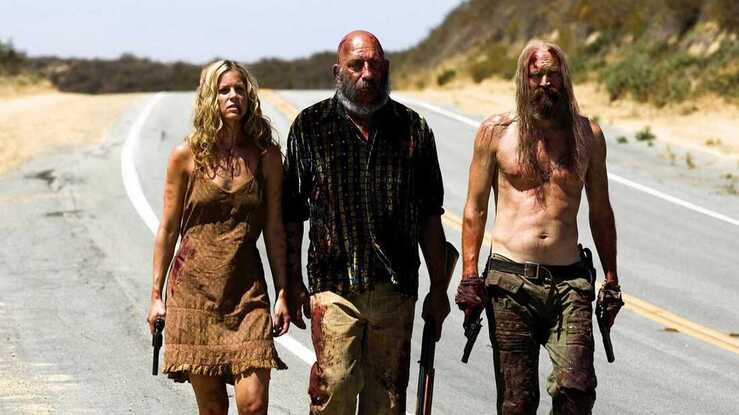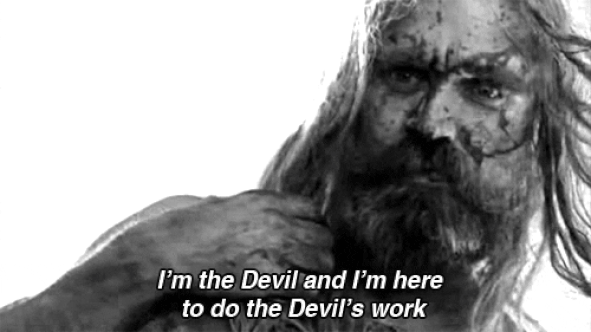 Love him or hate him, rocker turned filmmaker Rob Zombie has earned his seat at the horror table... ...And what a hard-won upward battle it was. His first film, House of 1,000 Corpses (2003), pleased horror fans but failed to reach commercial or critical success. The production trajectory of the film was a nightmare. Originally the film was backed by Universal, but after watching the dailies—and just how gruesome the tone and imagery really were—they passed on it. Zombie was prepared to release the film himself, but eventually struck a deal with Lionsgate. Reshoots, disputes with the MPAA, and a constant teetering on an NC-17 rating made the whole ordeal a struggle. Through it all, Zombie never lost his vision and integrity. Most importantly, that experience allowed him to make the more polished and focused, The Devil’s Rejects (2005). Celebrating its 15th anniversary this year, the sequel is often hailed as Zombie’s magnum opus. The Devil’s Rejects is everything a sequel should be and nothing you expect it to be. With a bigger budget, more experience, and a reliable studio standing behind him, Zombie was armed and ready for his sequel. Taking a few tips from the James Cameron playbook, he consciously made quite a departure, stylistically and narratively, from his first film. While Corpses is a damn fun movie and has valiantly earned its cult status, it’s a mess of ideas and never finds a general sense of focus or fluidity. Instead of a predictable rehash following another group of dim-witted young twenty-somethings, Zombie wrote a sequel that explored the surprisingly deep relationship between the Firefly family. In Corpses, the villains were unquestionably the most interesting characters, so he shifted the focus and perspective to them for The Devil’s Rejects. It may be simple, but this narrative change ensured that whatever wild ride Zombie was taking us on would be fresh and avoid the many pitfalls sequels frequently fall into. What’s most impressive though, is that not only does the narrative perspective completely change, but you end up sympathizing with his wacky, vile ensemble of villains much more than you did with the central characters in the first film. That’s what makes Rejects so brilliant. We witness the Firefly family committing some of the most despicable acts ever seen in a theatrical feature, yet we fall for their charm. Baby, (Sheri Moon Zombie) Captain Spaulding, (Sid Haig), and Otis (Bill Moseley) are electric together on screen, and they’re all likeable in their own ways. In one now iconic scene, the three are road tripping to gain asylum when Baby notices an ice cream joint close by. Irritated that it will take too much time, Otis grumbles and loathes the idea. After several crude insults, teasing, and chanting with Spaulding that they want some “tutti-fuckin-frutti,” Otis finally gives, ever the ill-tempered but loveable brother. Dare I say it, this moment is wholesome and heartwarming. The writing and behavior in the scene make the family ties of this group of psycho outlaws completely believable. The amount of loyalty, chemistry, and closeness between these characters is comparable to the likes of a John Hughes film. While the surface sensibilities of The Devil’s Rejects don’t in any way resemble a film like The Breakfast Club (1985), the group dynamic believability is on point. One could argue that Zombie’s manipulation of our sympathies is deceitful or mean spirited, but I see it as an inventive way to present “bad guys” in film. Very few films dare to tread in these kinds of waters, but Zombie is a provocateur as much as he is an entertainer. He’s intent on making us feel uncomfortable, but he still has a soul, and his films reflect that. Make no mistake, The Devil’s Rejects is a gruesome, often disturbing film that can rub you the wrong way if you aren’t tolerant of its extremes. There’s a reason they went through the MPAA eight times before shaking the NC-17 rating. Despite all the gratuitous violence and anarchy, I never felt like it overshadowed the impact of the characters and their connection to one another. The violence and rage they represent is who they have inherently become, but at the end of the day, they still need a place to call home. Corpses was a wild funhouse attraction with all the trimmings of what we’ve come to love about Zombie’s films, but The Devil’s Rejects elevated the series into something much more tangible and even relatable. It’s hard to believe that fifteen years ago my friend’s brother, an employee at our local theater, snuck us into Rejects on opening night. I’ve followed Zombie’s films ever since. His films vary in quality, but he always makes the film he wants to make. He’s an uncompromising auteur who has fought his way to being (in my opinion) one of our leading horror filmmakers. The Devil’s Rejects works in a way that pleases not just horror fans, but film buffs in general. At its core, it operates as a great story with well-defined characters. So, whether it’s been a while since you’ve visited the Firefly family or you’ve never really gotten to know them, Devil’s Rejects’ 15-year anniversary is the perfect time for a celebratory meeting. The Devil’s Rejects is available to watch now on Amazon Prime Video. (In memory of Sid Haig) By Jeffrey W. Hollingsworth
1 Comment
Jackie Daytona
7/22/2020 01:15:12 pm
I like when they all sing Free Bird together!
Reply
Leave a Reply. |
Archives
March 2023
|


 RSS Feed
RSS Feed